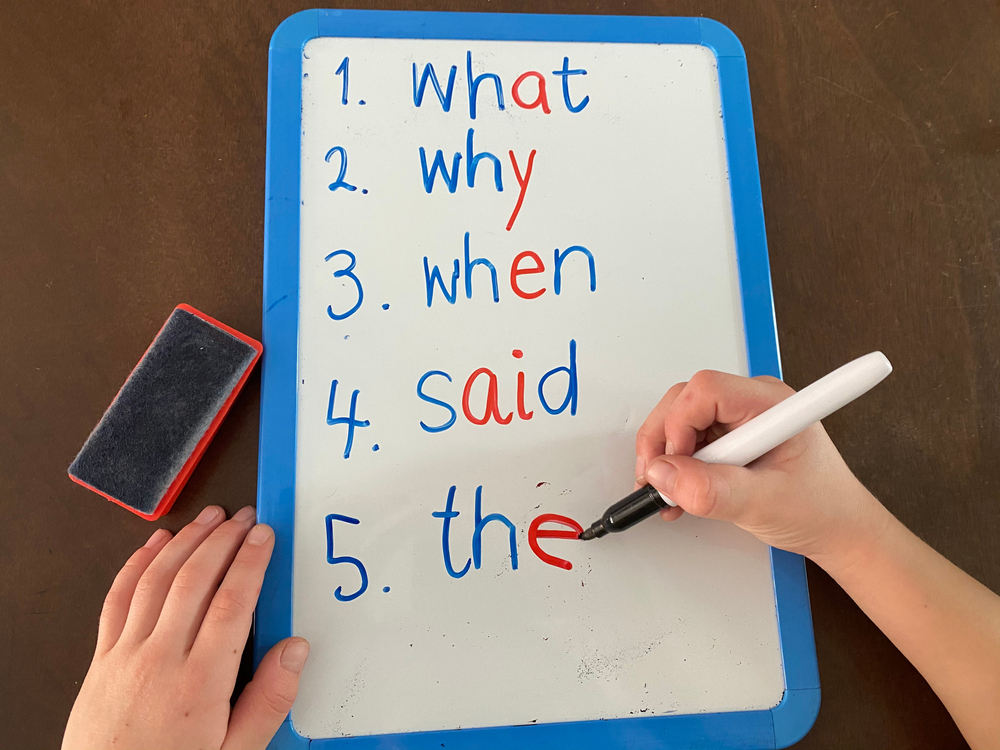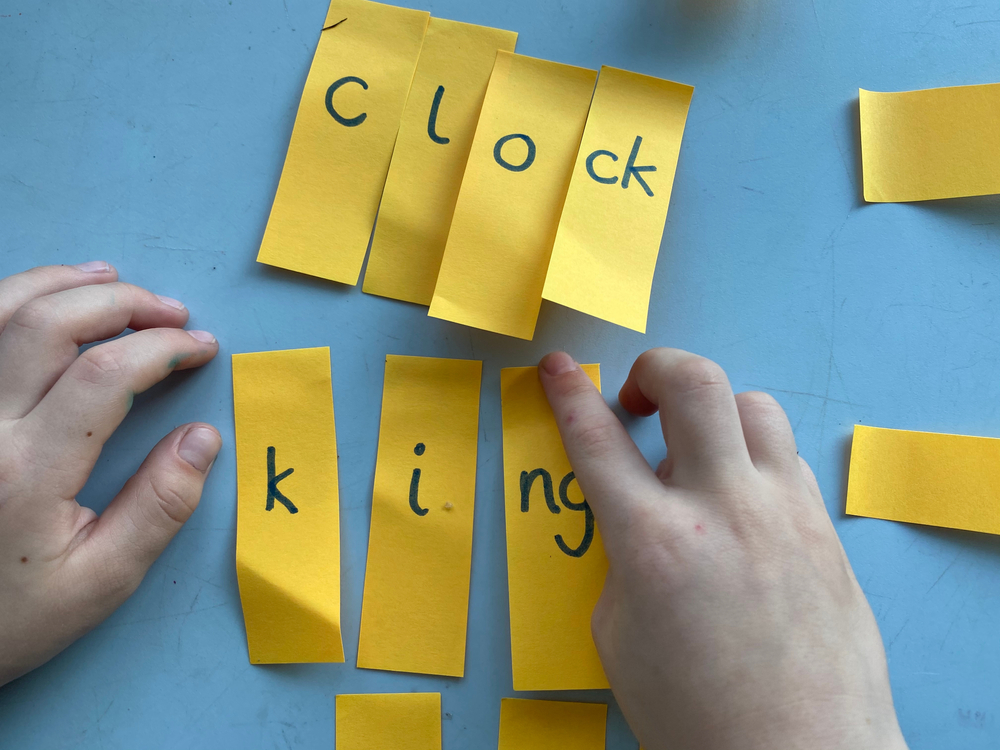
Spelling tests were once a common facet of elementary education. Every week and in nearly every grade level, students were given a list of words to memorize. Perhaps they even had to write a sentence using these words.
At the end of the week, the students were tested on how to spell their weekly list of words. The focus on spelling also required that children were taught common word structure rules like “I before e except after c or when sounding like “A” as in neighbor and weight.” Now, many school districts are ditching the spelling tests. Instead, children are being taught to ‘sound spell’ words.
What’s the problem with ditching these tests? Children who struggle to spell also could struggle with reading and writing. All these skills tie together. After all, if a child knows that ‘ei’ sounds like ‘ay’ as in neighbor and weight, they haven’t just found a clue about how to spell the word they also have been given a clue on how to sound out the word, too.
An article published in Educational Psychology Review in March 2021 noted that 250 schools have ditched the spelling test, and that many states don’t include spelling as part of standardized tests. The article posited the important question: “Does spelling still matter?”

Why Spelling Matters
Schools that ditch spelling tests could rely on studies and white papers to explain the curriculum changes. Education strategies change often, and teaching methodologies evolve.
Does sound spelling work, though? Is it enough for children to gain proficiency in understanding how letters are correctly arranged to form a word?
Some students could be fine with learning how to spell based on context and word recognition. In addition, technology has changed the world drastically from the days when spelling tests were mandatory.
Today’s computer programs include spell check and even grammar check. Students will see a word highlighted when it’s incorrectly spelled, and the program will show them how the word should be written. These tools are convenient, but are they reliable?
In an article titled “How Spelling Supports Reading,” writer Louisa C. Moats explains that for children with learning disabilities or those with poor spelling ability, spell check won’t always be a reliable tool for predicting a correct word.
Moats referenced a study that discussed the inaccuracy of spell checkers. In her article, Motes noted that these tools “…catch just 30 to 80 percent of misspellings overall (partly because they miss errors like here vs. hear), and that spell checkers identified the target word from the misspellings of students with learning disabilities only 53 percent of the time.”

How Spelling Can Change Everything
Parents don’t necessarily have control over their school district dropping spelling tests or even spelling instruction. Ultimately, the school’s curriculum is decided by the district and must adhere to state guidelines, too.
Does spelling matter? Parents should not assume that because a district chooses to ditch weekly spelling tests that this means that spelling fluency is no longer a meaningful or important skill. In fact, spelling—correct spelling—can change the meaning of a sentence.
Think about homonyms like “their or there” or “deer or dear.” If a child spells a word how it sounds, they could compose a sentence that is seemingly incoherent. They also could write a paragraph that creates a different meaning than what is intended. Words matter, and finding the right word to write matters too.
Does Spelling Impact Reading?
Spelling can impact writing; Moats noted in her article that fluent spelling impacts writing; she explains that if a writer has to think about spelling a word correctly, they can’t focus on content. The same could hold true for children.
How does spelling impact reading, though? That answer is a bit more interesting and a little complicated, too. Moats noted that in 2000 the National Reading Panel (NRP) decided to do away with spelling (and writing) as part of reading lessons.
Typically, spelling was part of reading instruction. Older Millennials, Generation X and Baby Boomers probably remember reading, writing and spelling lumped into ‘English.’
Why did NRP do away with the spelling component? Moats explains that the NRP “…implied that spelling would develop in response to appropriate reading instruction.” This belief was rooted in newer understanding related to spelling and how children learned to spell. She noted, though, that a recent study threw this implication or assumption upside down.
According to Moats, “A group of researchers in Houston who followed children from first through fourth grade found that spelling achievement can plummet while reading comprehension holds steady at about the 50th percentile.”
Basically, children weren’t always learning to spell from reading instruction. They weren’t learning how to spell from context. They were holding steady in their comprehension, but their spelling ability didn’t always correlate with reading comprehension.
The researchers who conducted the study, which included 1,342 students across 127 classrooms (in high-poverty schools), found that better spellers were also better readers. In addition, while children were still average in reading comprehension, their spelling proficiency was decreasing.

How to Teach Spelling at Home
The study by Houston researchers noted that better spellers were better readers. In addition, it’s also clear that spelling can improve writing ability. If this skill is no longer being taught in the classroom, how can parents help their children become proficient spellers?
The best way to help children with spelling might be to embrace the past. The article in Educational Psychology Review referenced a book that was often used to help schools teach spelling. The book is the Horn-Ashbaugh Speller, and it was published more than a century ago (in 1920). Parents can still find copies of the book.
In addition, there are many books that also offer lists of spelling words. Parents can do a quick search for spelling books to check out all the options. The site SpellQuiz.com also includes spelling lists through 12th grade.
Teaching children how to spell might simply be focused on skill and drill. Parents can review spelling words with children at any grade level, but starting early is always a great idea.
Parents can provide a weekly spelling list for children to memorize. Review these words with children and help them practice their spelling proficiency. Parents also might need to teach familiar lessons (like the I before E rule).
Spelling, for many children, might be a bit like memorizing multiplication facts (which some schools have also dropped). Learning to spell might simply be focused on helping children understand the patterns of words to remember how each word is created and designed.
Spelling Games to Play
Children can learn through play. To help children learn spelling skills, parents can incorporate games and activities. There are apps that are designed as games that can help children with spelling. Some of these might be created as crossword puzzle designs. Games like Scrabble and Bananagrams also help children use letters to create words and can challenge their mind, too.
An app called Spellbee includes more than 65,000 words that children can learn to spell. This app also could help them prepare for a local spelling competition. The app is free to download but it does offer in-app purchases.
Can a Reading App Help Children Learn to Spell?
For children who struggle to read, a reading app can be used at home to help children gain reading fluency and comprehension mastery, too. Apps like Readability also could help children with vocabulary and spelling.
Every book in Readability includes a vocabulary list. In addition, when children are reading in the app, they can tap any word in a story to hear the definition of the word or hear it used in a sentence. In this way, Readability helps children expand their vocabulary and learn how to pronounce (and read) new words.
Every word that a child discovers is included in their master vocabulary list. Children always have access to their list, and they can practice and review the words and definitions as often as they wish.
Children read stories aloud in Readability. The program features a built-in AI tutor that learns each child’s voice, and the tutor provides assistance when or if the child struggles during a lesson. The tutor can help if a child is unable to decode a word or seems to be struggling.
Understanding the context and meaning of a story also is integral to the literacy journey. At the end of each story, the AI tutor asks the child questions about the story. If a child answers the question incorrectly, the tutor shows them a section from the story that can help them answer the question. The tutor also reads the section aloud.
The child will then have the opportunity to answer the question again. By helping children learn how to identify clues in the text, Readability reinforces another important reading skill: re-reading. Children who struggle with comprehension might find that reviewing a section or going back to an earlier page of the book can help them gain understanding.
Parents who want to help their child gain reading proficiency can explore Readability for free by signing up for a trial period. Readability offers a free seven-day trial that lets children explore all the features of the program. Start exploring the app today!

 Español
Español